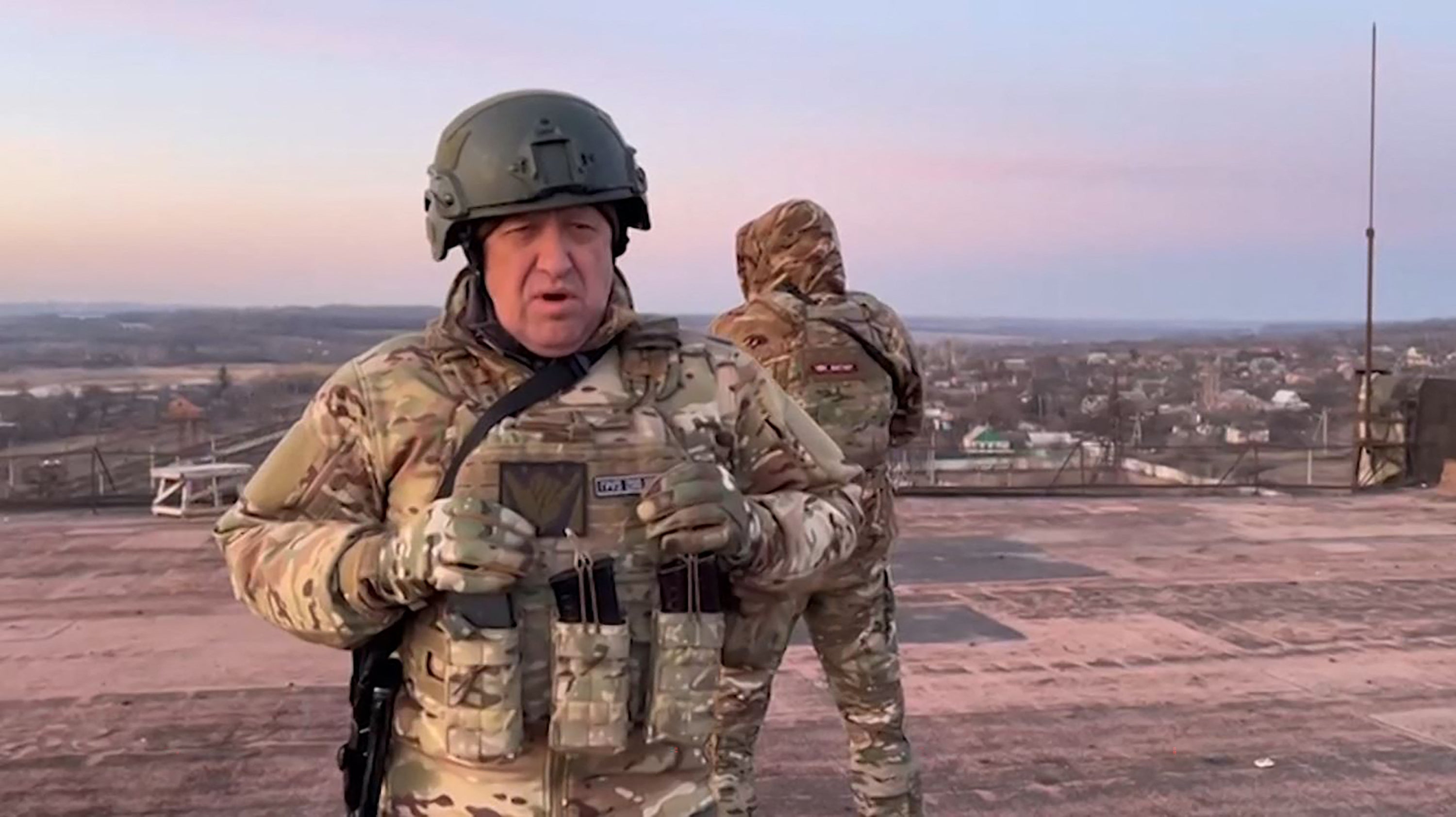Guns for hire: How shadowy Wagner Group mercenaries support Russian soldiers in Ukraine conflict
Kremlin-linked private militia increasingly central to Vladimir Putin’s ‘special military operation’
Your support helps us to tell the story
From reproductive rights to climate change to Big Tech, The Independent is on the ground when the story is developing. Whether it's investigating the financials of Elon Musk's pro-Trump PAC or producing our latest documentary, 'The A Word', which shines a light on the American women fighting for reproductive rights, we know how important it is to parse out the facts from the messaging.
At such a critical moment in US history, we need reporters on the ground. Your donation allows us to keep sending journalists to speak to both sides of the story.
The Independent is trusted by Americans across the entire political spectrum. And unlike many other quality news outlets, we choose not to lock Americans out of our reporting and analysis with paywalls. We believe quality journalism should be available to everyone, paid for by those who can afford it.
Your support makes all the difference.The planes started moving in late December 2021 and early January 2022.
Onboard the secretive military aircraft from Libya were hundreds of hardened mercenaries of the Wagner Group, the shadowy umbrella of private military contractor firms linked to Vladimir Putin’s ally Yevgeny Prigozhin. Their destination was the same place where the so-called “little green men” first came to international prominence in 2014: Ukraine.
Experts closely following the movements and actions of the Wagner complex for years say the military contractors – who include former and active-duty Russian, Ukrainian, Belarusian and Serbian soldiers – have been on the ground in Ukraine for months, their presence confirmed in news reports and hinted at in cryptic social media posts by accounts associated with the mercenary group.
But many questions remain about their role in the Ukraine conflict.
“They are skilled at counterinsurgency, and Ukraine is the birthplace of the group,” said Ruslan Trad, a specialist on the Wagner Group who has traced its movements in the Middle East and Africa.
“They are very good at tracking resistance. But I doubt they will participate in direct fighting,” he told The Independent.
That has not been borne out by subsequent events, with Wagner fighters frequently in the thick of it all along the frontline, most recently in the entrenched, months-long warfare around the old Donbas mining town of Bakhmut, seen as a crucial strategic target by Moscow.
Early in the conflict, an anonymous source told The Times newspaper that the Wagner mercenaries in the country were part of a scheme to assassinate Ukrainian president Volodymyr Zelensky and other senior officials – a scenario that experts say would be a stunning departure from the group’s modus operandi.
In 2014 in Ukraine, Wagner fighters battled side by side with Russian regular forces as well as pro-Kremlin militias, often serving as praetorian guards to maintain order among frequently intoxicated and undisciplined forces.
Since then, the Wagner mercenaries have been deployed as guns for hire in the Middle East, Africa and even Latin America. They are used by authoritarian governments to hunt down rebels and secure key installations from attack.
The United States has imposed waves of sanctions against Wagner as well as Mr Prigozhin over alleged human rights abuses and destabilisation efforts in the developing world as well as disinformation campaigns that have targeted western nations.
According to a note to subscribers by the Soufan Group, a Washington security consultancy, the Wagner fighters could engage in scouting operations deep inside Ukrainian territory “as part of an effort to minimise the regular Russian military death toll”, as well as false flag operations to boost morale among Russians and sabotage operations to dampen the spirits of Ukrainians.
“The combination of Prigozhin’s acumen in launching disinformation operations and his control over PMC Wagner creates a unique asymmetric Molotov cocktail,” said the Soufan note.
Mr Trad said that, based on his research, which includes discussions with sources close to Wagner, the ambitions of the current deployment remain cloudy. He said most of the Wagner fighters are in the eastern provinces firmly under Russian control, but that a few appear to have been initially deployed to the Kyiv area, entering via the Belarus border.

Mr Trad and others describe the Wagner fighters as far more experienced than most Russian forces, but perhaps not as deadly as the spetsnaz, the elite Russian special forces commandos who would more likely be put in charge of assassination operations.
“While Wagner has close links to them, it is not their kind of job,” said Trad. “Until today they - Wagner - didn’t participate in assassination attempts. Why Wagner, when Russia has much better units for this?”
More likely than not, said Mr Trad, the Wagner fighters are being positioned for what Russia anticipates as the dirty war that will come after a potential Kremlin victory, as pockets of Ukrainian guerillas create obstacles to Moscow consolidating its power and installing a puppet regime.
Capturing, interrogating and abusing rebels or deserters is more the style of Wagner, according to experts and investigators. The United Nations is currently investigating the killing of more than 30 civilians at the alleged hands of Wagner mercenaries and forces of the Central African Republic in a 16 January operation targeting a rebel group.
In 2021, a Syrian filed a case in a Russian court against Wagner fighters who allegedly tortured and beheaded his brother while securing a gas plant in 2017. Gruesome footage of the killing, apparently taken as a souvenir by one of the Wagner fighters, had emerged.
“Front line battle missions are very different situations than what Wagner is used to,” Mr Trad said. “If you look at Central African Republic, they are very good at stopping every kind of resistance, but at the price of engaging in torture and human rights abuses.”





Join our commenting forum
Join thought-provoking conversations, follow other Independent readers and see their replies
Comments